1/72 DHC-4 Caribou prototype - Hobby Craft
Re: 1/72 DHC-4 Caribou prototype - Hobby Craft
Bloody amazing 


Head A/CAM Phantom Phanatic, Shit Stirrer and Karma Bus Driver toot fkn toot 
- hrtpaul
- Posts: 4165
- Joined: Sat Apr 12, 2014 10:44 am
- Location: Like I'm gonna tell you lot
Re: 1/72 DHC-4 Caribou prototype - Hobby Craft
Hello everybody.
Are you all OK. I hope so. Here things begin to get better.
I've managed to get some work done in preparation for painting.
Well, the painting stage is not behind the corner, but I have to do some things now, otherwise such works could damage the painted model.
First the landing light.
The transparencies in the kit are quite nice and fit perfectly into the leading edge.
They are too much clear, so it is necessary to put something inside.
Closed the rear part of the lamp with a piece of polystyrene. Made 4, lost 2 inside the wing.
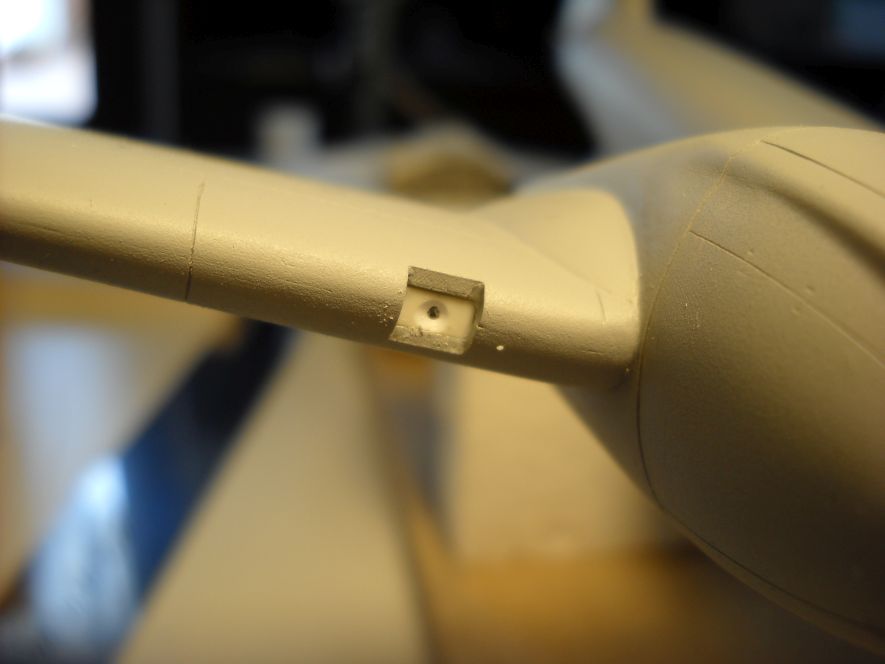
Made 2 little bulbs with stretched clear polystyrene. Still to be glued.
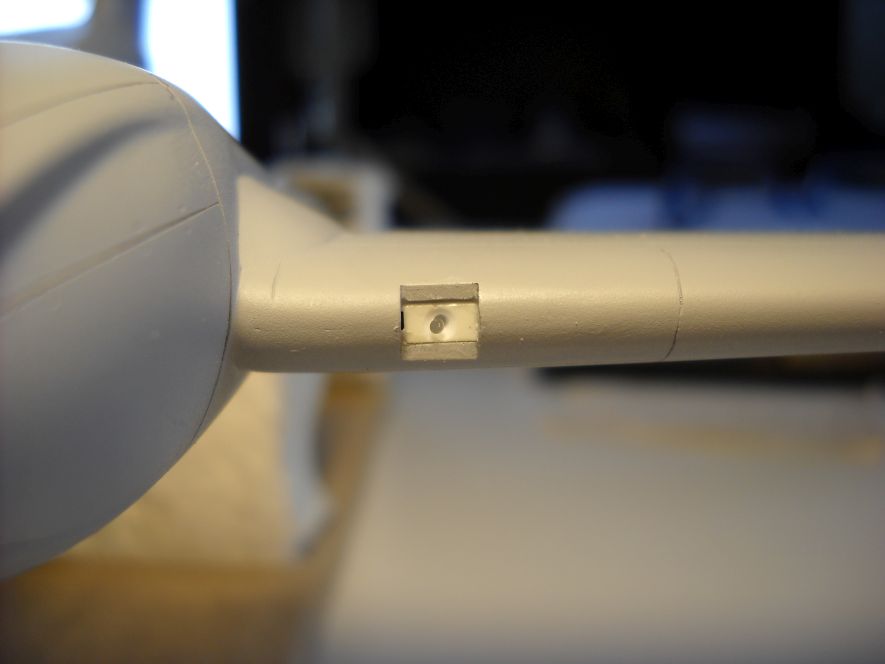
Like most of the prototypes, also the Caribou had a big nose probe with many sensors. Difficult to tell from the pics I have, how really they are shaped, but the main tube is there.
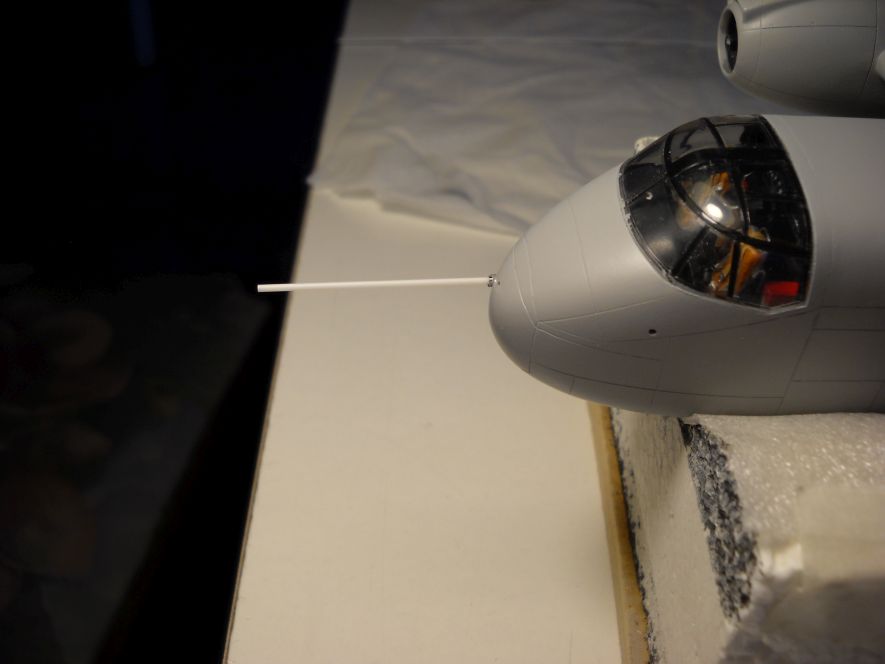
In this web page https://dehavilland.com/en/history
there is an interesting photo of the DHC-4, revealing a sort of inspection panel on top of the nose.
Not quite a good fit, we should say, but an interesting detail.
In the next pics the process to make that rised panel.
A contour of vinyl tape to give the shape. Filled inside with white putty.
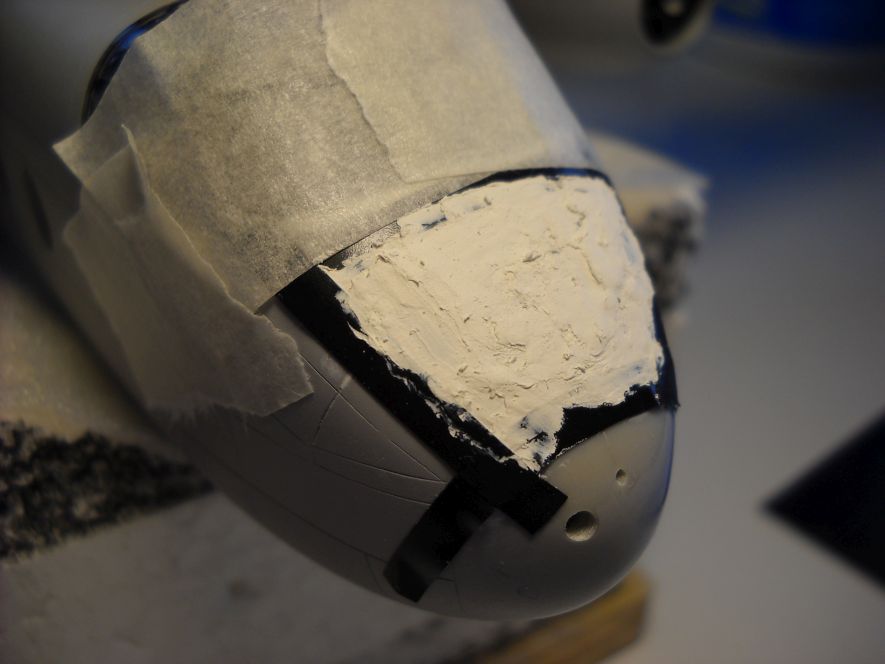
Here the panel. Still needs to be sanded down a little.
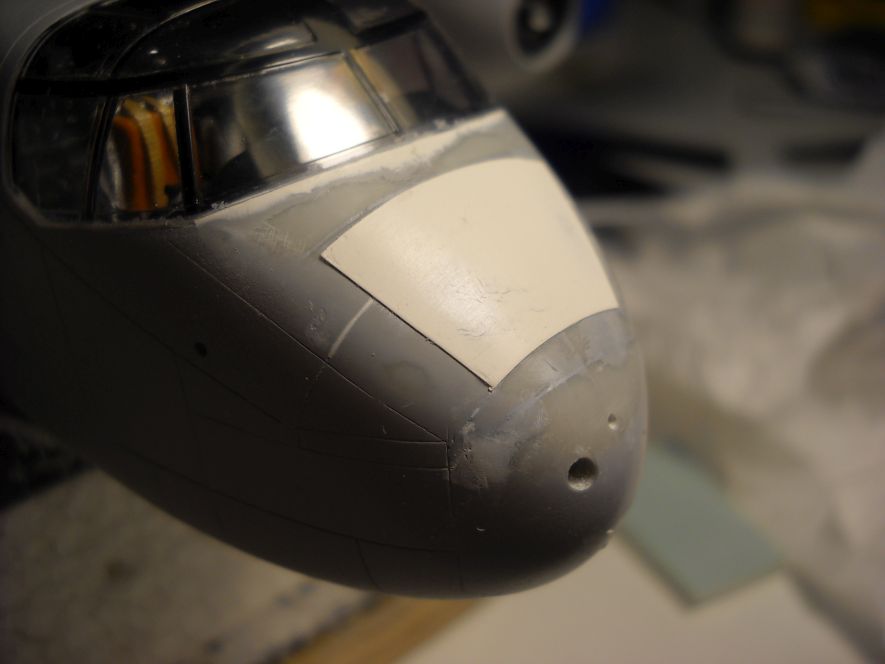 .
.
Onto the rear end now.
Unfortunately the fit of the tailplanes is not tight enough.
So I have enlarged the two mounting tabs and put inside the fin a little plate to get things straight.
Really not visible in the pic, but it is there, just above the tabs.
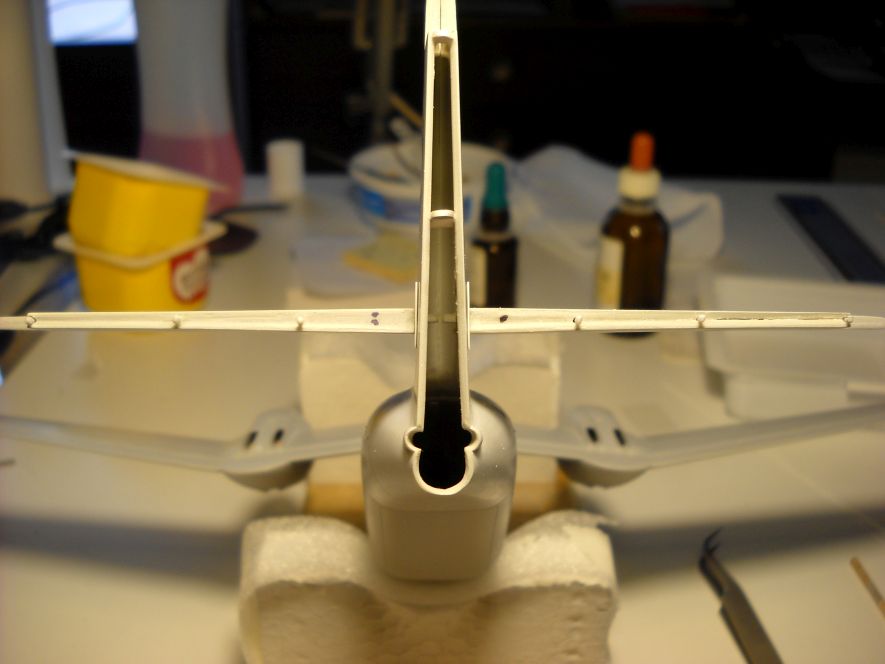
I have spent some hours reading the maintenance manual, just for fun, but that way I discovered how tailplanes and rudder work.
Very interesting how, as always, DHC designs are an example of "robust engineering"
So I discovered, f.e. that what I thought were only 2 trim tabs each side, actually have different functions.
The inside one is called "spring tab" the outer "trim tab".
The spring tab, when the control column is in neutral position, is deflected upwards by 5 degrees, while the trim is at zero.
Long story short, these are the tailplanes with the tabs aligned as per the manual and the rudder.
It is a bottom view, since the actuating brakets are on the underside.
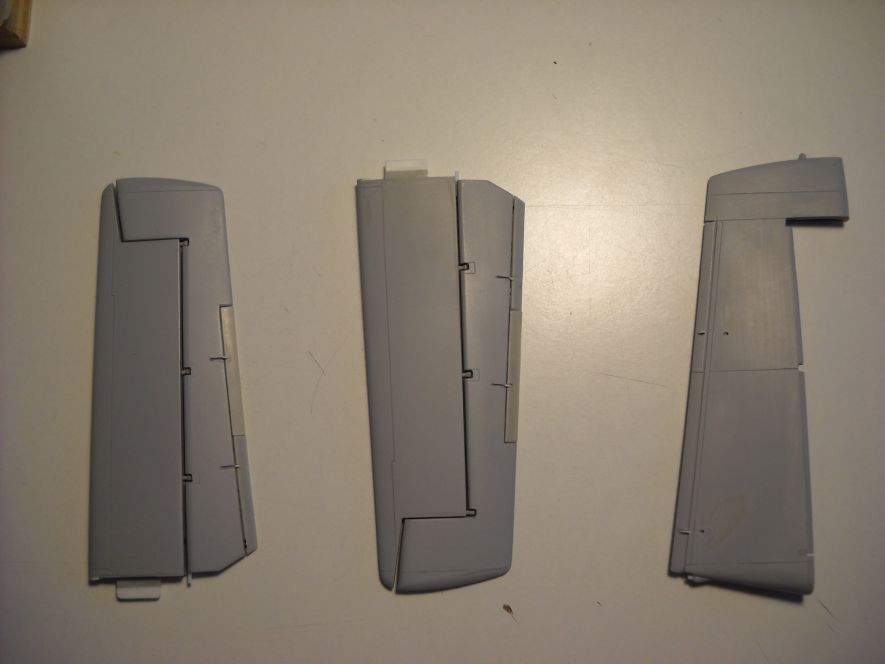
Ok, that's all. Thanks for watching.
Stay safe!
Eugenio
Are you all OK. I hope so. Here things begin to get better.
I've managed to get some work done in preparation for painting.
Well, the painting stage is not behind the corner, but I have to do some things now, otherwise such works could damage the painted model.
First the landing light.
The transparencies in the kit are quite nice and fit perfectly into the leading edge.
They are too much clear, so it is necessary to put something inside.
Closed the rear part of the lamp with a piece of polystyrene. Made 4, lost 2 inside the wing.

Made 2 little bulbs with stretched clear polystyrene. Still to be glued.

Like most of the prototypes, also the Caribou had a big nose probe with many sensors. Difficult to tell from the pics I have, how really they are shaped, but the main tube is there.

In this web page https://dehavilland.com/en/history
there is an interesting photo of the DHC-4, revealing a sort of inspection panel on top of the nose.
Not quite a good fit, we should say, but an interesting detail.
In the next pics the process to make that rised panel.
A contour of vinyl tape to give the shape. Filled inside with white putty.

Here the panel. Still needs to be sanded down a little.
 .
.Onto the rear end now.
Unfortunately the fit of the tailplanes is not tight enough.
So I have enlarged the two mounting tabs and put inside the fin a little plate to get things straight.
Really not visible in the pic, but it is there, just above the tabs.

I have spent some hours reading the maintenance manual, just for fun, but that way I discovered how tailplanes and rudder work.
Very interesting how, as always, DHC designs are an example of "robust engineering"
So I discovered, f.e. that what I thought were only 2 trim tabs each side, actually have different functions.
The inside one is called "spring tab" the outer "trim tab".
The spring tab, when the control column is in neutral position, is deflected upwards by 5 degrees, while the trim is at zero.
Long story short, these are the tailplanes with the tabs aligned as per the manual and the rudder.
It is a bottom view, since the actuating brakets are on the underside.

Ok, that's all. Thanks for watching.
Stay safe!
Eugenio
- 72linerlover
- Posts: 70
- Joined: Thu Jul 21, 2016 2:50 am
- Location: Cremona, Northern Italy
Re: 1/72 DHC-4 Caribou prototype - Hobby Craft
Very sharp work there Eugenio, detail is excellent as usual!
Ray
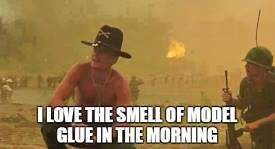

-

RayS - Posts: 2271
- Joined: Thu Apr 17, 2014 10:24 am
- Location: RAdelaide!... YPAD
Return to Member's Works in Progress
Who is online
Users browsing this forum: No registered users and 8 guests
